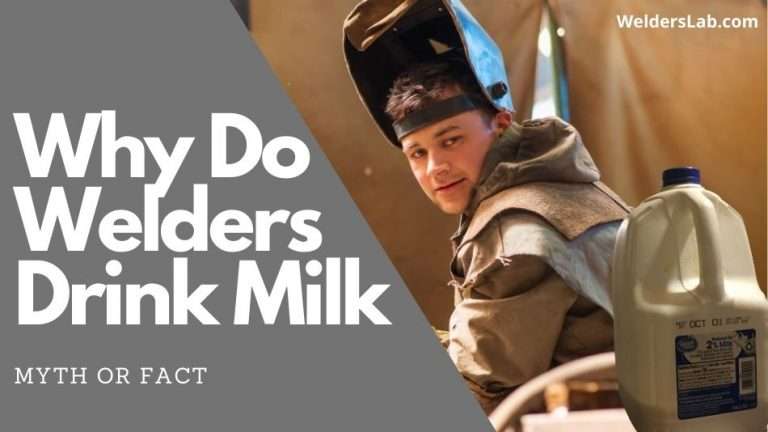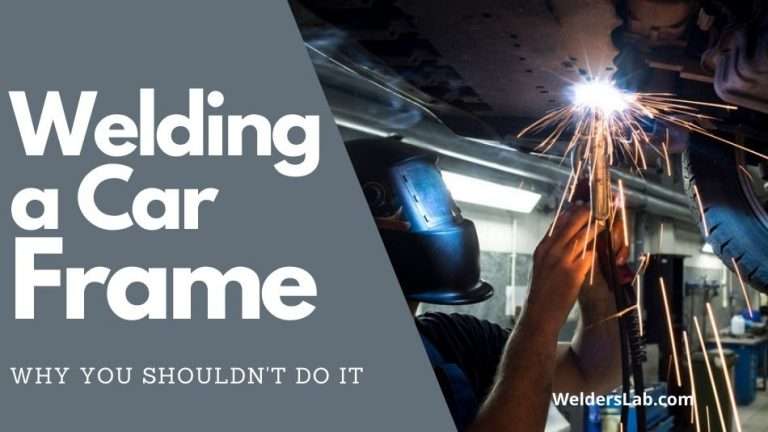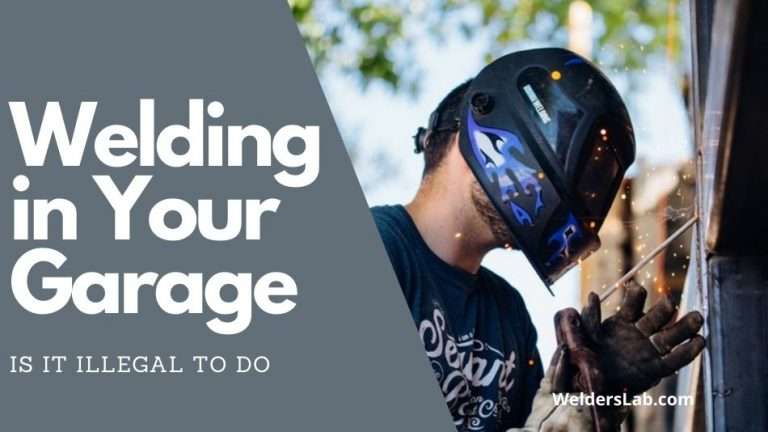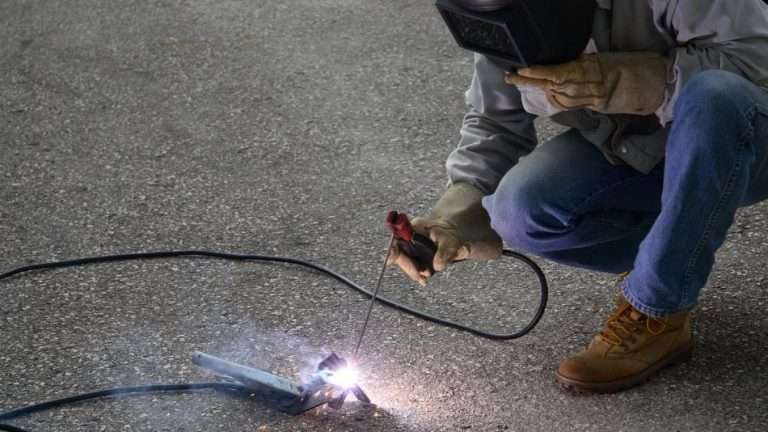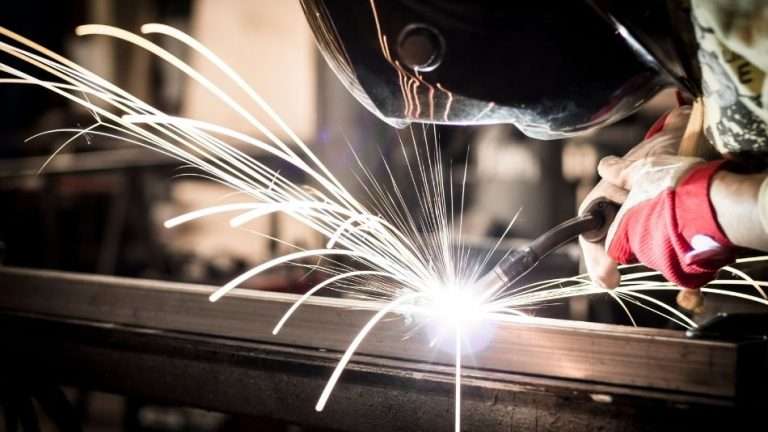How to Protect Yourself from Welding Fumes – Beginner’s Guide
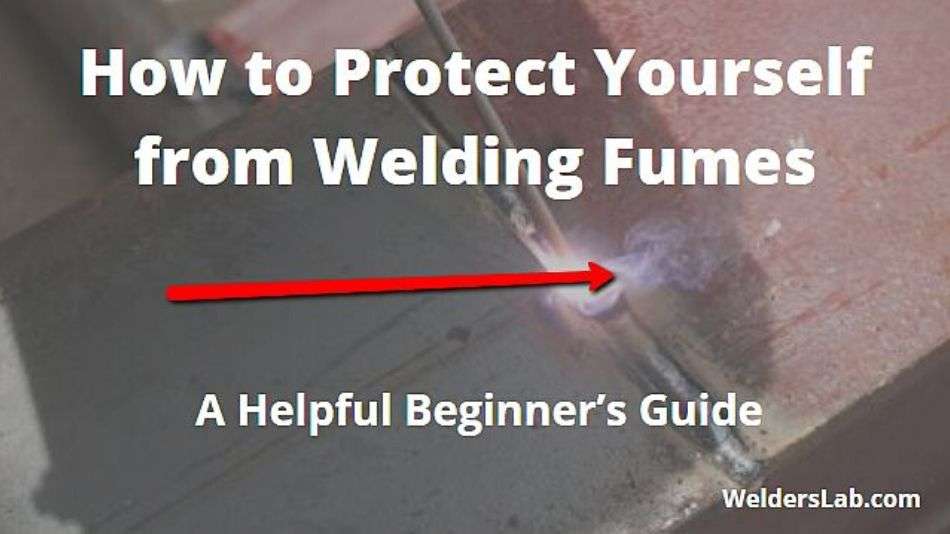
As a kid, I never aspired to be a welder. However, as I got older I recognized that welding makes a good lifelong career. I knew I could be successful in the field for life and it was an industry that would never go away. As a welder, I understand the risks of the job.
Every welder knows there are many hazards that come along with this career path. From spatter to slag to flame and heat and everything in between.
Another welding hazard that many people don’t consider or commonly overlook is welding fumes. One thing we have to learn to be successful without negatively impacting our health is how can we protect ourselves from welding fumes.
What are the things that welders can do in order to protect themselves from the fumes that are naturally emitted during most welding processes? One of the most effective means of protection is to wear a mask while welding. There are many types of gear that can be used to protect yourself and what you need may vary based on the type of welding you are doing.
In this guide, we will cover in detail how to protect yourself from welding fumes. There are many basic tips you can put into action as well as items you can purchase to protect yourself.
This is an extensive guide designed for the beginner but suitable for anyone in the welding industry.
Keep reading to learn how to protect yourself from welding fumes in full detail.
How to Protect Yourself from Welding Fumes
I mentioned earlier that there are items you can purchase to protect yourself but there are also welding practices that you can put into place through your work that can also help to protect you from welding fumes.
We will talk in more detail about the gear you can purchase later in this guide. Let’s start by going over some basic functionality tips you can implement to protect yourself.
Some of these things are straightforward and simple while others may require you to adjust your habits or learn new practices.
Here is a simple list of things you can do, and we will cover each of these in more detail.
- Proper ventilation
- Nozzle positioning
- Using the right equipment for the job
- Utilize shields
- Resist using fans
- Clean-Air booths
- Routine maintenance
Let’s dig a little deeper into some of these with more explanation.
Proper Ventilation
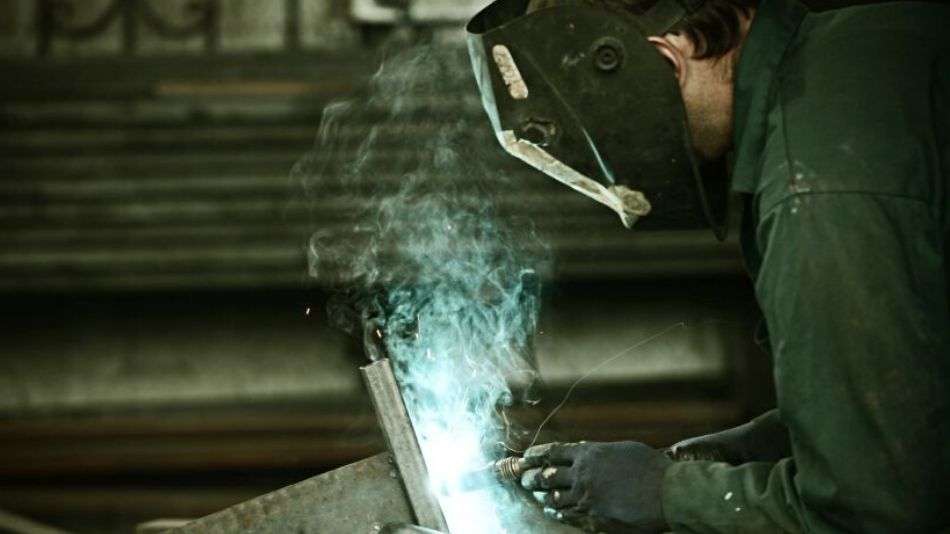
This seems pretty straight forward, right? How many times do you start a welding job without really considering the ventilation aspect?
Ventilation is incredibly important, particularly in tight spaces where there isn’t much ability to maneuver your positioning to get the best airflow.
You can utilize air tools that can help to ventilate the fumes. In the welding industry, it is not uncommon to use air-cleaning equipment. There are even portable units that allow you to move the hose into whatever limited working space you have.
Alternatively, in more open spaces you can utilize downdraft tables, hoods, and shields to help circulate and ventilate your air.
Nozzle Positioning
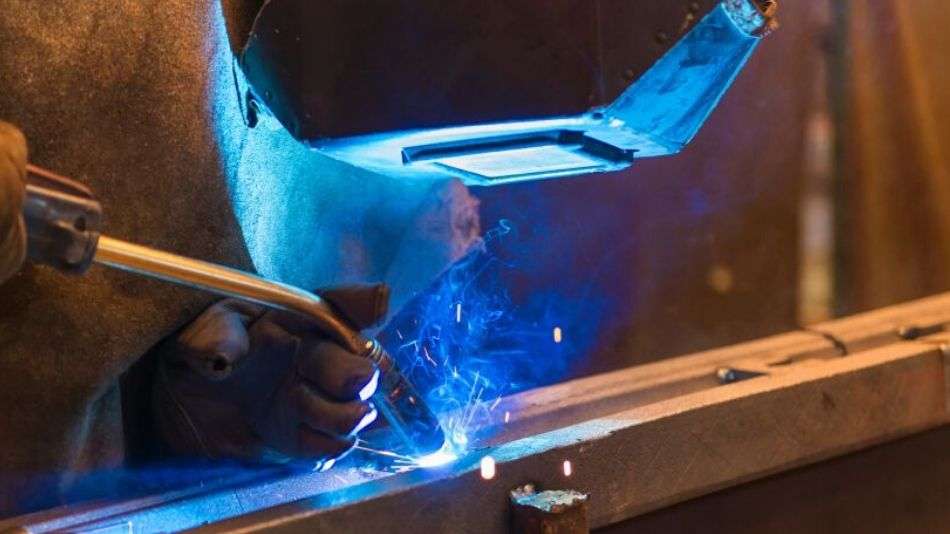
Learning how to properly maneuver and position your nozzle is no walk in the park. It takes practice and it takes skill. However, the way that your position your nozzle and the arm can significantly impact the amount of fumes that are emitted.
These techniques are most likely things you learned while learning the welding trade but you may not remember them.
It is also possible to simply get too comfortable as you adapt to your personal functionality and forget to incorporate some of the most basic things.
For instance, you should position the nozzle within 4-8 inches of the weld, this measurement could vary depending on the equipment you are using. Not all equipment is created equally so you may need to play around with the distances to find what works best with your equipment.
One more thing, if you position the nozzle on the side of the weld opposite of you, this is a great way to reduce those hazardous fumes making their way into your air space. The fumes are drawn away from you rather than directly into your breathing space.
Shields & Equipment
Understand how the specific job you are working on could affect your airspace. For instance, if you’re working with something tall, you will want to consider using a hood and potentially a clean-air booth if you have that functionality available.
Items that are small and flat are the most versatile. You can work with shields and other gear for downdraft and backdraft setup. Additionally, a hood will do a lot for this type of job.
Should you wear a respirator when welding? There are certainly times this is the only answer for protecting yourself from fumes. It is not required and may not always be necessary but it’s certainly a tool you should have available.
Clean-Air Booths
Have you heard of a clean-air booth? If you haven’t, I’m sure you will at some point in your welding career. A clean-air booth is exactly as it sounds. It can be modular and it can typically accommodate multiple sizing needs.
These booths are basically ventilated and filtrated using a backdraft-type system. This filtration technique pulls the fumes and smoke away from you as you work. They are set up to filter out those hazardous fumes so you don’t even have to worry about them.
This is an ideal solution but it isn’t always available as an option, particularly if you travel to miscellaneous welding sites and work in an assortment of conditions.
Routine Maintenance
One of the best ways to monitor and reduce your fumes is to ensure you are treating your tools and equipment properly. Much like cars need oil changes, your welding gear needs to be cleaned and maintained on a regular basis.
Things like clogged hoses and dirty filters can completely negate your safety equipment. In fact, in these instances, it’s like you’re not even using safety equipment at all.
You can set yourself up a routine where you are checking these things and this cycle might even help you catch things before they get out of hand.
Keep things clean and maintained in order to ensure your items are at optimal functionality. This includes all tools and equipment.
What Are Welding Fumes and Where Do They Come from?
Welding fumes? Isn’t it just smoke?
Actually, it’s not and there is reason to be concerned about those fumes. They are hazardous and they can lead to any number of health issues – present and future. After all, haven’t you heard of welder’s lung?
Welding fumes are a serious matter and it’s important to be informed not only on how to protect yourself but also on what these fumes are how you can protect yourself while you are welding.
Welding is a calling. The last thing I want is to scare you away from that. Me, and thousands of other people, have heard the call and worked the industry for years over.
We simply want to share our knowledge and ensure that you know how to best protect yourself.
Let’s begin.
Welding fumes are emitted because a type of metal gets heated above its boiling point. This is essentially how welding works. This process causes those metals to emit fumes that become an intense mixture of silicates, fluorides, and metallic oxides.
This complex mixture of fumes may vary based on the type of metal, the type of welding tool, and even your welding practices. The heated metal emits a vapor that includes solid particles that are extremely fine but solid nonetheless.
The fumes from welding are a combination of the fumes from your welding tools and the aforementioned gases emitted from the heating of the metal and other materials. There are multiple types of fumes based on the materials in the process.
In addition, the various coatings on a material can also affect the fumes that are emitted into the air.
Items with metal coatings are perhaps some of the most hazardous coatings that emit the most dangerous fumes. However, let it be known that you want to shield yourself from all welding fumes.
Remember that these factors directly affect welding fume exposure.
- Welding rod material
- Coatings
- Welding process and type
- Metals used
- Location of welding
- Ventilation setup
- Individual work practices
- Cleanliness, positioning, setup
These are processes that should be at the back of your mind. When you set up for a welding job, assess the site and location as well as the materials and plan for your breathing and ventilation.
You can remove coatings from your welding surfaces when possible to help protect yourself from the hazards these coatings might contribute to your workplace.
There are times when you may not be able to remove the coating but we recommend always using the approach of removing the coating if possible.
In addition to the complex fumes that are emitted from the welding process, there are also gases in the air specifically tied to welding practices.
These gases can also vary based on the welding tools being used and the surroundings but here are a few examples.
- Gases from fuel – acetylene, propane, butane, and more
- Shield gases like helium, argon, and carbon dioxide
- Carbon monoxide produced by shielding gas (primarily pertaining to arc welding)
- Nitrogen oxide
- Hydrogen chloride from ultraviolet light and degreasing solvent combining
Welding fumes can have significant negative health effects. Stay informed in order to understand how the fumes you are potentially subjected to could cause potential health deficiencies and take actions to protect yourself from these fumes.
Types of Welding Fumes
There are more titles and types of welding fumes than we could possibly cover here. Some of them are well-known and others are rarer but the fact of the matter is, they are all fumes in the welding workplace.
Here are several types of welding fumes for your reference.
- Aluminum
- Chromium
- Copper
- Fluorides
- Lead
- Nickel
- Stainless steel
- Mild steel
- Galvanized steels (such as zinc)
- Carbon monoxide
- Phosgene
- Aldehydes
Many of these could potentially work into similar categories and some of the gases that are specified may include a variety of metals.
We are going to specifically break down the most-known categories in more detail.
Here are the types of welding fumes we will be covering.
- Regular mild steel fumes
- Galvanized welding fumes
- Stainless steel welding fumes
- Aluminum welding fumes
These 4 categories are quite broad and encompass a large number of materials.
Regular Mild Steel Fumes
Regular mild steel welding fumes are considered the safest form of fumes in the welding industry.
Mild steel typically includes things like carbon and iron. While these are considered fairly safe when it comes to fumes, they are actually still quite dirty and not recommended for regular breathing.
Some studies show that mild steel welding fumes can still lead to drastic health consequences like lung cancer and even kidney cancer. Because of this aspect and the revelations of these studies, mild steel fumes were classified as carcinogens in 2019.
For some time, these fumes were overlooked. When you hear the fumes classified as “fairly safe”, it can easily make one shrug their shoulders and not worry about the breathing consequences but more information about the subjection of these fumes continues to come to light.
This information reveals to us just how important it is to take proper safety precautions no matter how mild you think the fumes might be. While these fumes might be considered mild in small doses, working with them unprotected for any length of time can lead to drastic health conditions in the future.
Mild steel fumes do not necessarily require a respirator device but they do require proper setup and ventilation when you are working with them.
If you are ensuring your technique and your setup are conducive to proper ventilation and keeping a clean breathing space, then you will most likely be ok.
You need to ensure that there is proper exhaust setup, including local exhaust ventilation. If proper ventilation is not available or incorporated, you should seriously consider using respiratory protective equipment, and in fact, in some industries, it is required.
Galvanized Welding Fumes
When it comes to galvanized welding fumes, the most common materials welders work with are iron and steel.
Galvanized welding fumes can include gases like zinc, oxides, carbon monoxide, nitrogen oxide, and ozone. You might also be subject to oxygen deficiency if you find yourself welding in a tight or confined space.
With these gases, the effects can include metal fume fever, headaches, dizziness, eye irritation, nose and throat irritation mental confusion, and more.
The most common side effect of fumes from galvanized welding are things like dizziness, headaches, and in general feeling sick. This is called metal fume fever and it primarily comes from inhaling zinc oxide fumes.
When welding with galvanized fumes, it is much safer to use a respirator. Excessive exposure could, of course, lead to lasting health conditions that will leave you with negative health effects for the future. You might find yourself dealing with welder’s lung, cancerous situations, and more.
Galvanized steel welding is perhaps one of the most dangerous welding fume conditions you can subject your lungs to and it is extremely important that you impose proper safety precautions when you are welding with such materials.
When you ask the question “should you wear a respirator when welding?”, we recommend that you always use a respirator when welding with these materials.
You protect yourself from a lot of issues. You utilize other safety equipment regularly for your protection, and when working with galvanized steel, a respirator would be considered a necessary piece of protective equipment.
In addition to wearing a respirator, you should work in a properly ventilated area for extra protection. Respirators only filter to certain extents and you should set your area up for the best protection you possibly can when working with galvanized steel.
When working with galvanized steel, which causes such a bad reaction is the zinc oxide fumes that are released. These fumes are very dangerous and can even result in death if you are over-exposed or exposed regularly with no protection.
In addition to using the proper tools and ventilation, be sure that you have cleaned your respirator filters as recommended. Check them and ensure they are functioning properly. That respirator is practically useless if it is not well-maintained.
For additional safety, you can weld before galvanization but this is not always an option. If you can weld before the material is galvanized, you should certainly do so. However, if that is not an option, just be sure to take the proper safety precautions to protect your current and future health.
Even at a minimum, you may find yourself dealing with metal fume fever, which will make you feel as though you have a severe flu. Do you really want to risk your misery when you have the options and tools available to protect yourself?
If you feel that bad from limited exposure, imagine how you will feel in the future.
Stainless Steel Welding Fumes
Stainless steel might sound like it’s going to be harmless after reading about galvanized materials but we assure you it’s just as dangerous, if not worse.
Stainless steel contains Hex Chrome, which can be extremely toxic. This material is known for causing cancer and an array of additional health side effects.
Some of the gases that may be emitted from stainless steel welding include chromium, cadmium oxides, molybdenum, nickel, and vanadium.
These gases have an array of side effects each their own.
Chromium
Chromium is commonly found in plating materials and is produced by most stainless steel welding rods. When chromium is emitted, if you are not following proper safety precautions, you find yourself dealing with skin irritation.
This is a mild side effect. In more severe cases, the release of chromium leads to a more prevalent risk of lunch cancer. This is specifically known with hexavalent chromium (Hex Chrome) which is a known carcinogen.
Cadmium Oxide
Cadmium oxide is most commonly produced from stainless steel that contains cadmium or zinc alloy, specifically. These materials are quite common in some plating materials.
The most common side effects of cadmium oxide are sore and dry throat as well as difficulty breathing. In more severe cases or extreme exposure, there is excessive irritation of the respiratory system. Many welders are familiar with welder’s lung, which would be prevalent in this case.
This gas is another suspected carcinogen although it has not yet been specifically labeled as such. You could potentially experience kidney damage and emphysema as chronic long-term effects of this gas.
Molybdenum
Molybdenum is most commonly emitted from nickel alloys, steel alloys, iron, and various stainless steel materials. The effects of this gas are milder in nature but certainly, cause for concern that could lead to chronic effects.
The most common side effects are eye, nose, and throat irritation. This irritation could be mild or severe. Additionally, those exposed to molybdenum might also experience shortness of breath.
Nickel
Nickel itself is a type of metal but nickel is also a gas produced from materials like stainless steel, Inconel, Monel, Hastelloy, high-alloy metals, welding rods, and plated steel.
Nickel is a broad category and therefore the effects can be broad as well. What you need to know is these materials can emit nickel which can lead to extensive health effects that are uncomfortable and can leave you with chronic issues.
Health side effects include eye, nose and throat irritation as well as skin dermatitis and chronic lung issues. Some industries have noted an increased risk of cancer but so far this has not been noted for the welding industry with this material.
Vanadium
Vanadium gases are emitted from stainless steel, nickel alloys, and some steel alloys. This gas has perhaps some of the direst and long-term side effects associated.
Side effects include skin and eye irritation as well as respiratory tract irritation that can become chronic or prolonged. In chronic circumstances, this gas leads to pneumonia, fluid in the lungs, bronchitis, and retinitis.
Aluminum Weld Fumes
Aluminum welding fumes have been known to contain fluorine, beryllium, copper, silicon, and even arsenic. Welding aluminum can lead to fatal respiratory conditions due to the ozone and oxides that combine during the process.
Aluminum is a respiratory irritant as well as a known carcinogen. You can experience metal fume fever as a milder side effect, however, there are much deeper effects that might occur.
The chronic and long-term effects of welding with aluminum can be extensive.
Many shrug off this material as not posing a risk since it is flexible and lightweight but it can pose a significant health risk and you should protect yourself ultimately. At a minimum, be sure to have appropriate ventilation in place, at a minimum.
We also recommend that you utilize a respirator. Aluminum welding can lead to irreversible aluminous, which puts a significant strain on your respiratory tract.
This is where you are most likely to see aluminum lung, or what is more commonly known as welder’s lung – a chronic effect.
Gear You Can Use to Protect Yourself
No matter your welding materials, you should always ensure that you are working with proper shielding and ventilation.
Buyers Guide: Here is my complete buyers guide on finding the right welding fume mask.
These are the things you adjust and monitor with every single welding job. These are the no-arguments conditions that you always check for every welding job. Know your materials and how they might affect you and know and understand how your workspace is ventilated for your protection.
Additionally, it’s a good idea to invest in a respirator to truly protect yourself. Some materials are more harmful than others but you should keep a respirator on hand regardless.
My favorite is this Respirator mask from Miller Electric, model ML00895. It provides 99.7% filtration of both oil and non-oil-based particles.
It’s lightweight and effective for the purpose. It’s simple to work with a large exhaust valve and low-profile design.
Conclusion
Welding fumes are certainly no joke. It’s absolutely important that you exercise the utmost care and learn how to protect yourself from welding fumes.
While some fumes are milder than others, you certainly don’t want to inhale a lot of them, especially not on a routine basis.
As a welder, it can be challenging to avoid inhaling the fumes but we assure you that if you make the effort to follow the tips and instructions in this guide, you will be on the path to reducing the fumes you inhale.
These few simple steps and taking the action to protect yourself through gear and ventilation puts you one step closer to protecting yourself from any harmful health issues.
We hope this guide has been helpful and informative. We certainly don’t want to scare you but rather, we hope that you feel as though you have the information you need to dutifully protect yourself to the best of your abilities while you also do your job.

